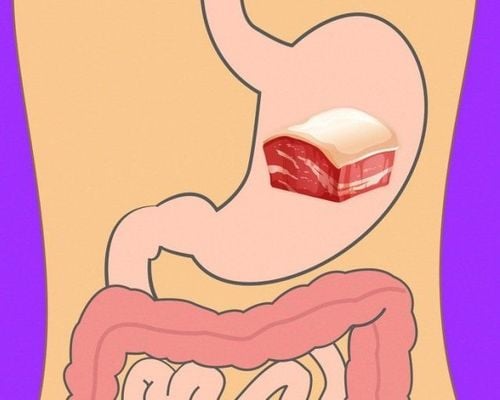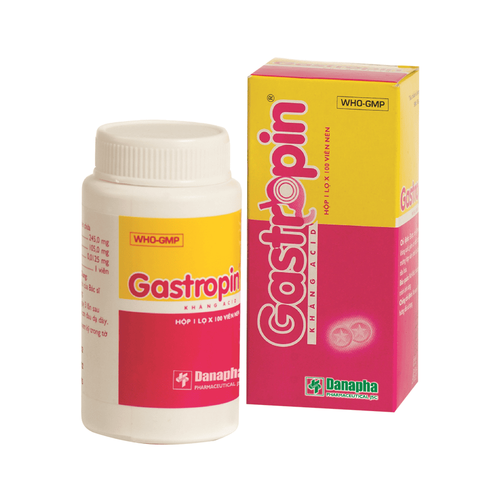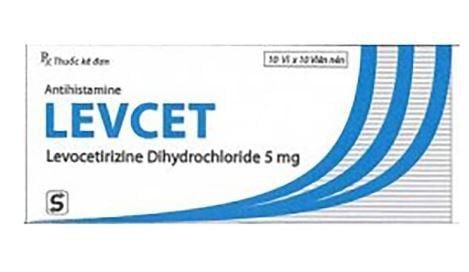This is an automatically translated article.
Posted by Master, Doctor Mai Vien Phuong - Department of Examination & Internal Medicine - Vinmec Central Park International General Hospital
Symptoms of food intolerance include gas, bloating, diarrhea, constipation, cramps and nausea. Symptoms of a food allergy include hives, swelling, itching, anaphylaxis, and dizziness.
1. Food sensitivities
Some foods cause intolerance in the digestive tract. This is where your body can't break it down correctly or your body reacts to foods to which you're sensitive. For example, lactose intolerance is when your body cannot break down lactose, a type of sugar found in dairy products.
Causes of food sensitivities or intolerances:
Not having the right enzymes you need to digest a certain food Reaction to food additives or preservatives such as sulfites, MSG or colors artificial pharmacological factors, such as sensitivity to caffeine or other chemicals Sensitization to natural sugars found in certain foods such as onions, broccoli or Brussels sprouts

Symptoms of different food sensitivities. But the symptoms of intolerance are all related to digestion. These may include:
Bloating and bloating Diarrhea Constipation Cramping Nausea
2. Food allergy
The immune system is the body's defense against invaders such as bacteria, fungi or the common cold virus. A food allergy occurs when the immune system identifies a protein in what you eat as an invader and responds by creating antibodies to fight it.
Food allergy is an immune-mediated reaction to food. The most common is an immunoglobulin E (IgE)-mediated reaction. IgE is an allergy antibody. They cause an immediate reaction when chemicals, like histamine from mast cells, are released.
Food allergies can be fatal, unlike food intolerances or sensitivities. In severe cases, eating or even touching a small amount of an allergen can cause a serious reaction.
Symptoms of a food allergy include:
Skin reactions: Rash, swelling and itching Anaphylaxis : Difficulty breathing, wheezing, dizziness and death Gastrointestinal symptoms

Eight foods account for 90% of allergic reactions: milk, eggs, fish, shellfish, peanuts, tree nuts, wheat, and soy.
There are also non-IGE-mediated food allergies. These reactions occur when other parts of the immune system are activated in addition to the IGE antibody.
Symptoms of a non-IGE reaction are often delayed and occur primarily in the gastrointestinal tract. These include vomiting, diarrhea, or bloating. Little is known about this particular type of reaction, and it is generally not life-threatening.
3. What to do in case of emergency
Eight foods account for 90% of allergic reactions to food. These are:
Caviar Shellfish Peanuts Tree nuts Wheat Soybeans People with food allergies must avoid these foods. In addition, parents and caregivers of children with food allergies must be trained to treat accidental ingestion, Farzan says.

She explains that self-injecting epinephrine should always be available and that parents and caregivers should know how to use the injection.
The potential effects of an allergic reaction are serious. But efforts are made to accommodate people with food allergies. School lunchrooms may be peanut-free to accommodate children with peanut allergies.
In addition, product labels must state if the food is produced in the same facility that handles the most common allergens.
Food sensitivities are not life threatening. There are also cases of food intolerance, which is also not immune-mediated and due to an inability to process or digest food.
Department of Endoscopy - Gastroenterology is one of the key specialties at Vinmec International General Hospital. For timely examination, advice and treatment of digestive diseases, you can contact Vinmec Health System nationwide or book an appointment on the website for service.
Please dial HOTLINE for more information or register for an appointment HERE. Download MyVinmec app to make appointments faster and to manage your bookings easily.
References
Allergy and Immunology: Non IgE-mediated food allergy. (2016). rch.org.au/uploadedFiles/Main/Content/allergy/Non%20IgE%20Food%20Allergy.pdf Berni Canani R, et al. (2016). Diagnosing and treating to carbohydrates in children. ncbi.nlm.nih.gov/pmc/articles/PMC4808885/ Food allergy versus food intolerance. (n.d.). aaaai.org/conditions-and-treatments/library/allergy-library/food-intolerance Food labels. (n.d.). foodallergy.org/food-labels Li J. (2017) What’s the difference between a Food allergy vs. food intolerance: What's the difference? mayoclinic.org/diseases-conditions/food-allergy/expert-answers/food-allergy/faq-20058538 Mayo Clinic Staff. (2018). Milk allergies. mayoclinic.org/diseases-conditions/milk-allergy/symptoms-causes/syc-20375101 Nowak-Wegrzyn A, et al. (2015). Non-IgE-mediated gastrointestinal food allergy. jacionline.org/article/S0091-6749(15)00430-3/pdf Types of food allergy. (n.d.). allergyuk.org/information-and-advice/conditions-and-symptoms/36-types-of-food-allergy














